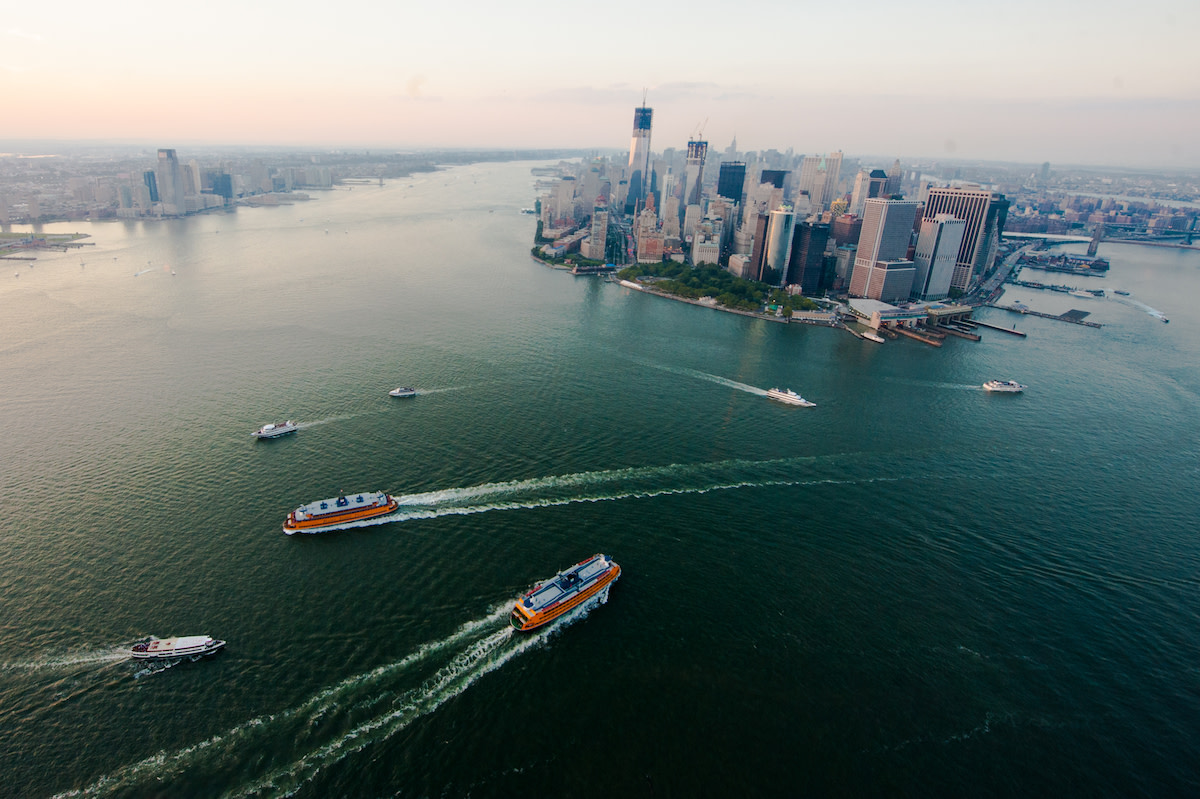MansBrand.com Articles Provided as noted by attribution.
New York City is an extraordinary place to paddle. The Hudson waterfront on the west side of Manhattan boasts unparalleled views of the Statue of Liberty and the world’s most famous skyline, but like any busy urban waterway paddling there is not without its challenges.
Ferries crisscross the river day and night, and all manner of craft ply the waterfront, from barges and cruise liners to pleasure boats under power and sail. Add rebounding boat wakes and powerful tidal currents to that mix, and it’s remarkable that kayakers in New York have been involved in only one serious collision with a commercial vessel in recent years. But it was a memorable one.
During an August rush hour in 2016, the NY Waterways ferry Jersey City collided with a group of 10 paddlers, knocking several from their kayaks and injuring three people, including veteran Manhattan Kayak Company (MKC) guide Jay Cartagena and an 18-year-old man who suffered deep lacerations to his left arm.
The accident occurred just before 6 p.m. near the West Midtown Ferry Terminal at Pier 79, with video of the ensuing rescue aired on local news channels. In a news conference that evening, the commander of the New York Police Department’s Harbor Unit announced that the young man’s arm had been “partially severed.” That detail led all the news coverage, and though the injuries were not as severe as initially described, the accident illustrated the hazards of paddling in busy commercial waterways.

Big, Beautiful and Busy: Ferries and other vessels coming to and from Lower Manhattan crisscross New York Harbor.Photo: Keith Sherwood/Shutterstock
A Coast Guard investigation focused on two primary causes: a lack of communication between the kayak and ferry companies, and sun glare that prevented the ferry captain from seeing the group of kayakers in his path. Due to the intense glare, the ferry captain relied on his radar to make sure there was no traffic in his path. Kayaks, of course, do not appear on radar.
Rather than slowing or posting a lookout, however, the captain accelerated into the glare. Within a minute of leaving the dock he was making 22 knots and heading straight for the kayakers. The guide, Cartagena, shouted and waved his paddle. It was no use. At that time of day, in those conditions, he and the other kayakers were all but invisible to the ferry operator.
Cartagena watched in disbelief as the ferry collided with a double kayak carrying two experienced paddlers, including the man whose left arm was badly lacerated. Then the ferry struck him as well. “I think part of the reason why I got hit was because I couldn’t get myself out of the way because I was just so much in shock about what just had happened,” Cartagena later told investigators with the Coast Guard and National Transportation Safety Board. He suffered a dislocated shoulder, broken rib and punctured lung, as well as lacerations on his hand and neck. His first thought was getting back into his boat to assist the others. Cartagena and MKC owner Eric Stiller did not reply to requests for comment, and NYC ferries declined to comment on the incident, which was the subject of a lawsuit
The post What Kayakers Can Learn From the New York Ferry Collision appeared first on MansBrand.
from MansBrand https://www.mansbrand.com/what-kayakers-can-learn-from-the-new-york-ferry-collision/?utm_source=rss&utm_medium=rss&utm_campaign=what-kayakers-can-learn-from-the-new-york-ferry-collision
via IFTTT
No comments:
Post a Comment